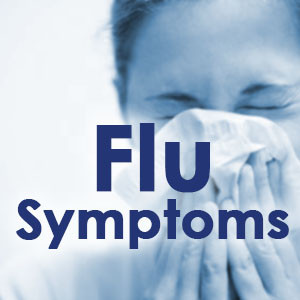
The flu can be a serious disease, but how can you be sure that you’re not just dealing with the common cold? Here are some differences between the two diseases, and a closer look at the signs of a flu infection.
While influenza is often confused for the common cold, the flu can result in serious health conditions, in individuals with a high risk of complications, while a cold usually does not.
The onset of flu symptoms is usually more sudden, and the symptoms themselves are typically more severe. Symptoms such as tiredness, dry cough, body aches and fever are stronger and more common with the flu. People with the flu are less likely to experience a runny or stuffy nose.
The common cold is caused by two different viruses with many subsets and variations, so there is no real vaccine available to prevent it. The flu, however, is caused by the influenza virus. Although the prevalence of the specific flu strains is not completely predictable, scientists are able to anticipate the most common strains and create an annual flu vaccine.
Due to the possibility of complications from the flu, it is especially important for those at risk to identify the symptoms of the flu as soon as possible and seek medical attention to prevent pneumonia, bacterial infections or an unexpected hospital stay. A health care provider can give you a test to determine if you have the flu or not.
Flu symptoms include:
- A fever of 100°F or higher (although you can have the flu without a fever)
- Feeling feverish
- Dry cough
- Sore throat
- Headaches
- Loss of appetite
- Muscle aches, especially in the back, arms, legs and around the eyes
- Chills and sweats
- Fatigue and weakness
- Nausea, vomiting and/or diarrhea (common in children)
- Sudden onset
- Nasal congestion
- Ill appearance with flushed skin and red, watery eyes
There are more severe symptoms for which you should immediately seek medical attention. These include:
- Difficulty breathing
- Pain or pressure in the chest or abdomen
- Sudden dizziness
- Purple or blue discoloration of the lips
- Confusion
- Persistent vomiting
- Seizures
- Flu-like symptoms that improve but return with fever and cough
The H1N1 strain of the flu virus (initially referred to as “swine flu”) is now one of the main circulating strains. Symptoms of H1N1 are very similar to other seasonal flu strains, however, with H1N1, nausea, vomiting, diarrhea, seizures, sudden confusion and cognitive or behavioral changes may be more common. This year’s flu vaccine protects against the H1N1 strain.
There are simple steps you can take to prevent catching the flu. The following are some of the easiest and most common ways to avoid catching and spreading a flu infection:
- Cover your mouth and nose when you cough or sneeze. Use a tissue or the inside of your elbow, not your hand.
- Avoid touching your eyes, nose and mouth. Germs spread this way.
- Wash your hands often with soap and water, especially after coughing or sneezing, or use an alcohol-based hand rub.
- Try to avoid close contact with sick people.
- Clean and disinfect surfaces and objects that may be contaminated with germs.
- Practice good health habits: get plenty of sleep and exercise, drink plenty of fluids, eat healthy food, and manage your stress.
- The best and most effective way to protect yourself from influenza is to get the flu vaccine!
